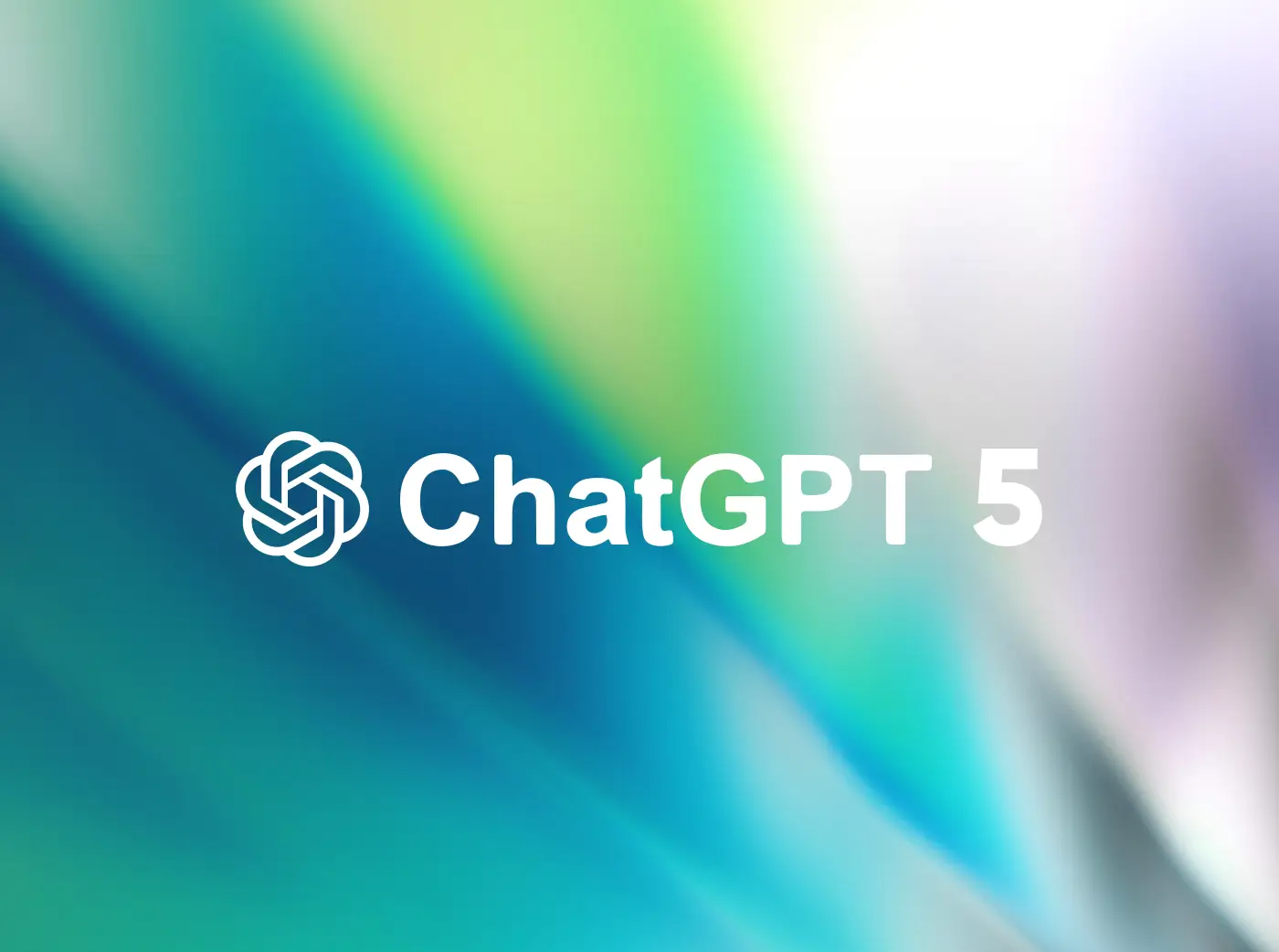OpenAI CEO Sam Altman once said bluntly that GPT-4 is “the dumbest model that any of you will ever have to use again by a lot.” This wasn’t just a joke — it was also a clear preview: a more powerful and smarter version of ChatGPT is on the way.
Now, that key moment seems to be just around the corner. According to reports from Axios and several other media outlets, GPT-5 is likely to be officially released in August 2025. Many users and professionals are paying close attention: What major breakthroughs will it bring? Will it reshape our understanding of AI’s capabilities?
With these questions in mind, I talked to several professionals and read through many user discussions and public sources. This article puts together all the known information about GPT-5 so far and highlights the points that we and GamsGo readers care about most — to explore what kind of changes this new generation model might lead to.
What We Know So Far
What is GPT-5?
GPT-5 is the next-generation large language model currently being developed by OpenAI. It will succeed GPT-4 and serve as the new "brain" behind ChatGPT. While it builds on the same core architecture as previous GPT models, it is expected to deliver a major upgrade in language understanding, text generation, and multi-task processing capabilities.
When Will GPT-5 be Released?
Based on all available information, GPT-5 is highly likely to be officially released around August 2025. While the exact date hasn’t been confirmed, the launch appears to be drawing very near.
Over the past few months, OpenAI CEO Sam Altman has repeatedly mentioned in public that GPT-5 is expected to roll out in the summer of 2025. On July 19, he posted on X saying, “GPT-5 is coming,” which drew a lot of attention.
At the same time, several media outlets — including The Verge and Yahoo Tech — have reported that GPT-5 may already be in internal testing, suggesting it’s now in the final stages before launch.
Who Can Use GPT-5?
Altman has actually given a relatively clear explanation on X about who will be able to use GPT-5. He wrote:
The free tier of ChatGPT will get unlimited chat access to GPT-5 at the standard intelligence setting (!!), subject to abuse thresholds.
Plus subscribers will be able to run GPT-5 at a higher level of intelligence, and Pro subscribers will be able to run GPT-5 at an even higher level of intelligence.
This means GPT-5 will no longer be restricted to paid users like GPT-4.5 was — free users will also be able to access the new model.
Although the exact difference between “standard intelligence” and “higher intelligence” has not been clearly defined, it’s reasonable to expect that subscription users will likely continue to enjoy a more complete experience in areas such as context length, response speed, and feature access.
If you want to try the more powerful version of GPT-5 early but don’t want to pay full price for an official subscription, consider buying a ChatGPT Plus account through GamsGo. It’s affordable, secure, and offers the same experience as the official version.
Likely Improvements in GPT-5
First, I want to make it clear that any judgment about GPT-5’s capabilities remains speculative until the model is officially released.
However, based on Sam Altman’s public statements and the development path of previous model generations, we can still extract some useful clues.
Here are the key improvements we believe are most likely to appear in GPT-5:
Model Integration
Altman recently stated on X that GPT-5 is a system that “integrates multiple OpenAI technologies (including o3),” and he made it clear that o3 will no longer be released as a standalone model in the future. He also admitted that having multiple model options has been confusing for many users.
Echoing this statement, several users and developers have discovered references to “gpt-5-auto” and “gpt-5-reasoning” in the configuration cache files of the macOS app. These screenshots have been widely shared on platforms like X, Reddit, and TestingCatalog.
Based on the naming, it’s likely that these two modes correspond to general task handling and enhanced reasoning capabilities, respectively.
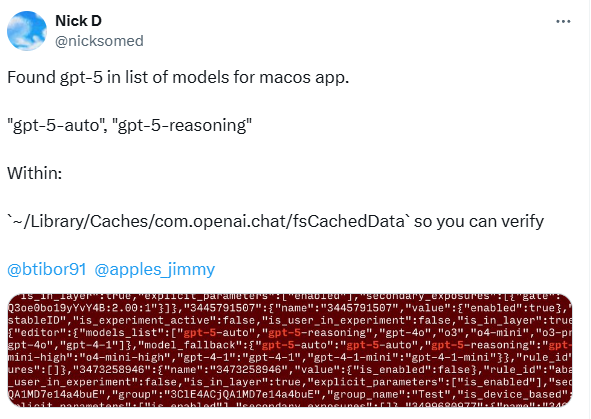
In addition, Yuchen Jin, co-founder and CTO of AI inference cloud provider Hyperbolic Labs, revealed in a post on X on July 19:
GPT-5 is not a single model, but a collection of models. It comes with a router that can switch between reasoning, non-reasoning, and tool-using models.
Taken together, these signs strongly suggest that GPT-5 is likely testing a “dual-mode” system—consolidating capabilities that were previously split across different models, such as o3’s language reasoning, o4-mini-high’s programming abilities, and GPT-4o’s image and voice processing, into a single unified framework.
Users may be able to switch between a general-purpose mode (Auto) and an enhanced reasoning mode (Reasoning), or let the system automatically determine the task type and assign the most suitable model without manual input.
If this model strategy is fully implemented, GPT-5 could significantly reduce the friction users face when switching between models. Compared to the previous multi-model setup, this integrated approach would be much more practical.
Stronger Reasoning Capabilities
Regarding the upgrade in reasoning, Altman clearly stated on X that GPT‑4.5 would be “the last non-Chain-of-Thought model.” This statement sends a clear signal — GPT‑5 is very likely to officially introduce the Chain-of-Thought (CoT) reasoning paradigm at the architectural level.
Chain-of-Thought refers to allowing the model to think step by step like a human, rather than giving an answer directly. This approach has already been proven in models like Claude.
In our past testing of ChatGPT alternatives, we also noticed that Claude performed very well when handling complex logical problems. Clearly, OpenAI is also accelerating in this direction.
In fact, even before GPT-5, OpenAI had already started integrating the Chain-of-Thought reasoning mechanism into the o-series models. Models like o3 and o4-mini, released in April 2025, have already shown the ability to try multiple approaches and choose the best one when facing tasks like logic questions and code generation — improving both accuracy and efficiency.
Altman also shared a personal experience on a podcast: he once received an email that was hard to understand and forwarded it to GPT‑5. The model’s response was “very good and very accurate,” and it made him exclaim, “I felt completely useless.”
Although this was a lighthearted moment, it indirectly reflects GPT‑5’s strength in handling complex reasoning tasks. Combined with OpenAI’s continuous improvements in reasoning over the past few model generations, we have good reason to expect that GPT‑5 will reach a new level in processing complex tasks.
Enhanced Memory Capabilities
In April 2025, OpenAI made a major upgrade to ChatGPT’s memory feature. At the time, Altman wrote on X:
We have greatly improved memory in ChatGPT--it can now reference all your past conversations! This is a surprisingly great feature imo, and it points at something we are excited about: ai systems that get to know you over your life, and become extremely useful and personalized.
He also described the feature as “surprisingly good.” From the way he put it, memory isn’t just a product update — it appears to be part of OpenAI’s long-term strategy.
GPT-5 is likely to expand this memory mechanism even further. Instead of simply remembering user-provided details, it may better understand personal preferences, maintain consistency across multi-turn conversations, and carry context more effectively — greatly improving the overall interaction experience.
We're Hoping to See
Although information about GPT-5 is still incomplete and what it will actually bring remains uncertain, there are some changes that we — along with many GamsGo readers — have mentioned repeatedly and most hope to see in GPT-5:
Fewer Hallucinations
If there’s only one improvement people are most looking forward to, it’s definitely reducing hallucinations and enhancing reasoning ability. This has been a key point raised again and again by GamsGo readers, and it’s also the most upvoted topic in GPT-5 discussions across various platforms.
Many users hope that when GPT encounters a gap in knowledge, it will openly admit “I don’t know” instead of confidently generating answers that sound plausible but are actually incorrect. Staying neutral—rather than defaulting to agree with the user’s perspective—is equally important when handling sensitive or complex topics.
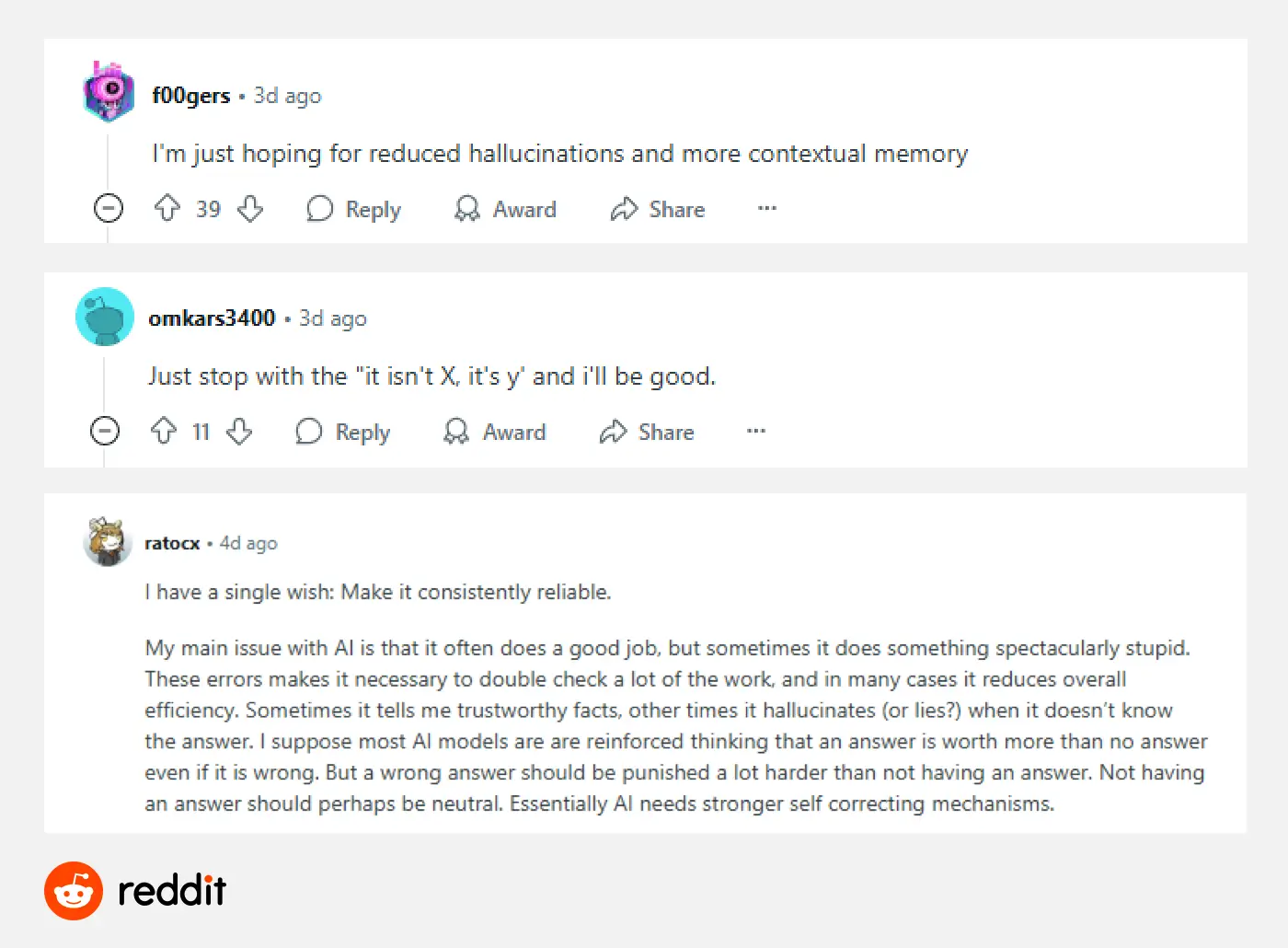
At its core, this is a further demand for stronger reasoning ability. Current models still tend to show issues like logical leaps or weak conclusions when performing multi-step analysis or executing complex instructions.
If GPT-5 can improve its reasoning and thinking skills, it won’t just reduce hallucinations—it will also greatly enhance its usefulness in scientific writing, code generation, and structured tasks.
Longer Context Window
One of ChatGPT’s most noticeable limitations right now is its restricted “memory” range. While GPT‑4o already supports 128K tokens, it still struggles to maintain context over longer documents or complex multi-turn conversations.
In actual use, we often run into this issue—for example, uploading a PDF with dozens of pages only to get answers based on the first half, or asking follow-up questions on a topic and finding the model has forgotten earlier conclusions.
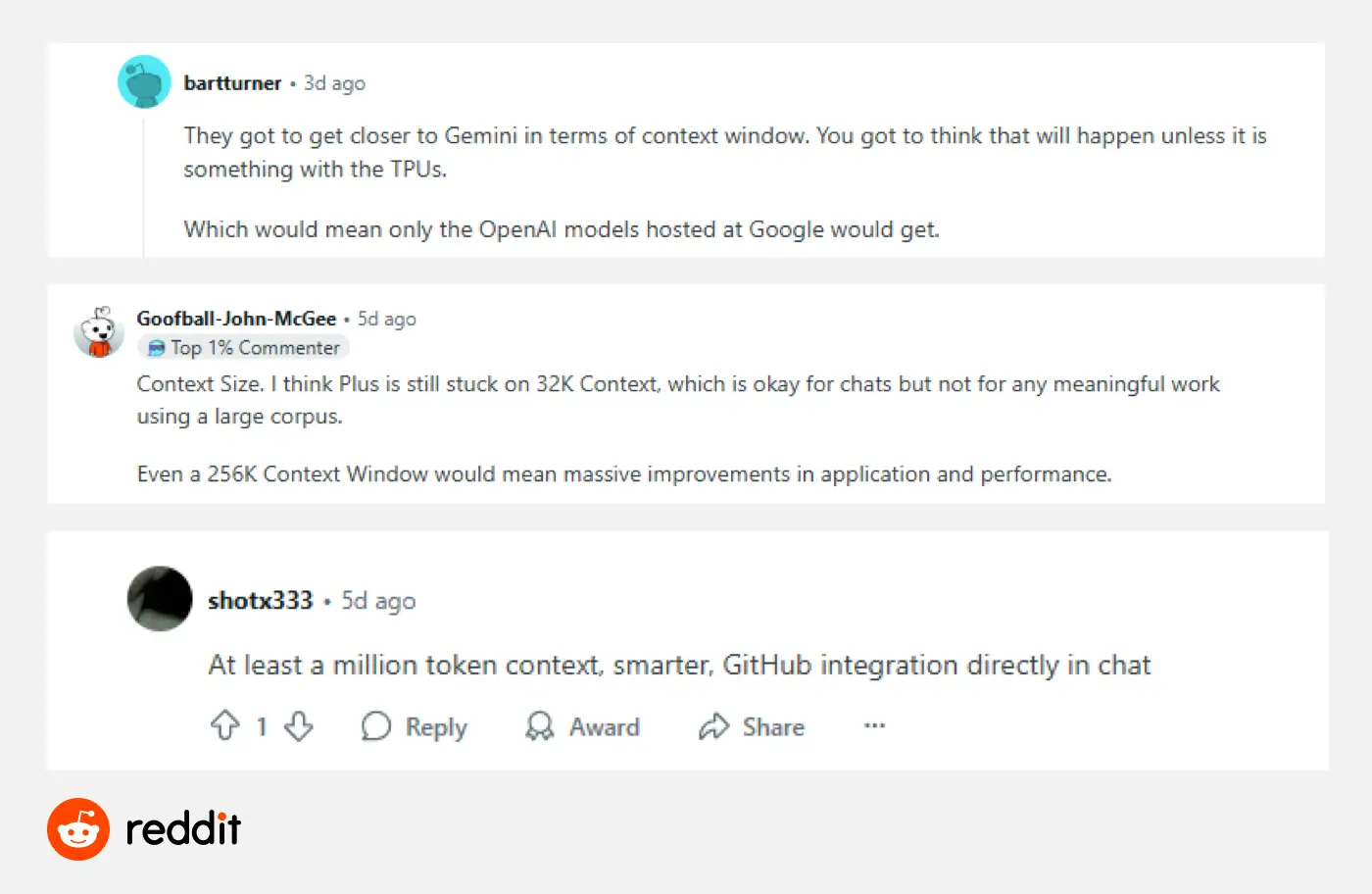
That’s why expanding the context window is widely seen as one of GPT-5’s key expected upgrades. Although OpenAI hasn’t shared specific numbers yet, if we look at the development trend from GPT-3 to GPT-4, each generation has steadily increased the context length.
It’s reasonable to expect GPT-5 to handle longer text more effectively, bringing clear improvements in long document comprehension and maintaining consistency in extended conversations.
Stronger Multimodal Capabilities
When it comes to image generation, ChatGPT is already fairly mature — the output is stable and of decent quality. However, video and voice features still have clear limitations.
Sora has shown OpenAI’s potential in video generation, but slow rendering speed and limited control over details are common complaints among users. At the same time, many are hoping for improvements in input capabilities — such as uploading video files or analyzing video content — to make video interaction truly usable.
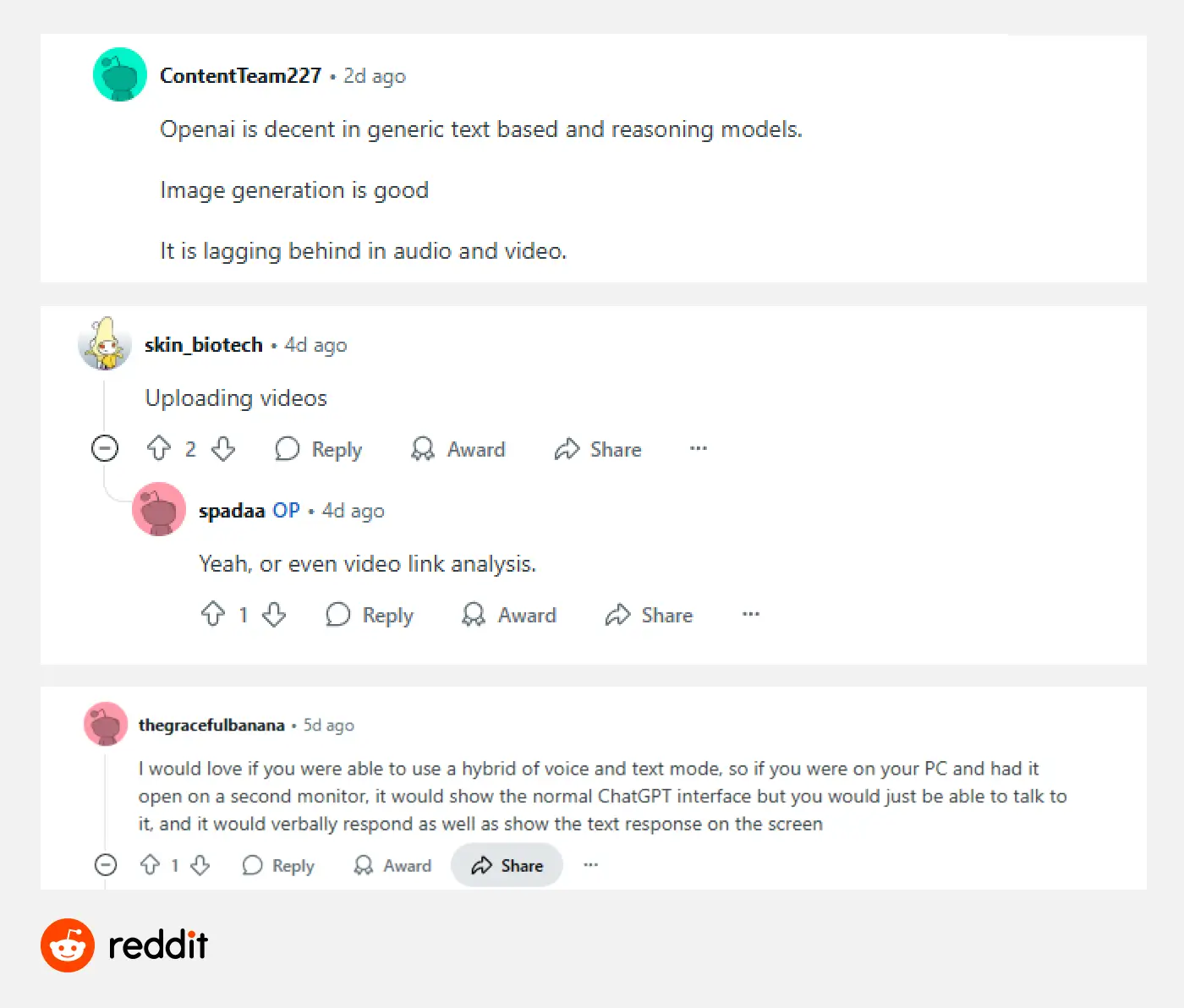
Similar issues exist on the voice side. The current voice tone lacks naturalness, there’s noticeable response delay, and smoothness in multi-turn voice conversations still needs work.
Some users have suggested enabling integrated voice and text interaction in desktop environments — for example, asking questions by voice and getting responses displayed as text on screen — to improve overall interaction efficiency.
Whether GPT‑5 will make breakthroughs in these two areas is something worth watching. As Microsoft AI CEO Mustafa Suleyman said, AI assistants should be able to “hear what you say, see what you see, and interact with you at the same time,” and eventually be capable of taking action.
More Human-Like Interaction
Although each generation of the model has improved in language ability, ChatGPT’s output still often feels noticeably “formatted.”
This is especially apparent to users who regularly use ChatGPT for writing — the structure is neat, but the logic can be jumpy, the tone flat, and it lacks the natural rhythm and conversational feel of human language.
GPT‑4.5 has made some progress in sentence structure and tone, but it’s still far from truly “speaking like a human.” What users are hoping for goes beyond polished wording — they’re looking for a shift in communication style, not just information dumping or templated responses.
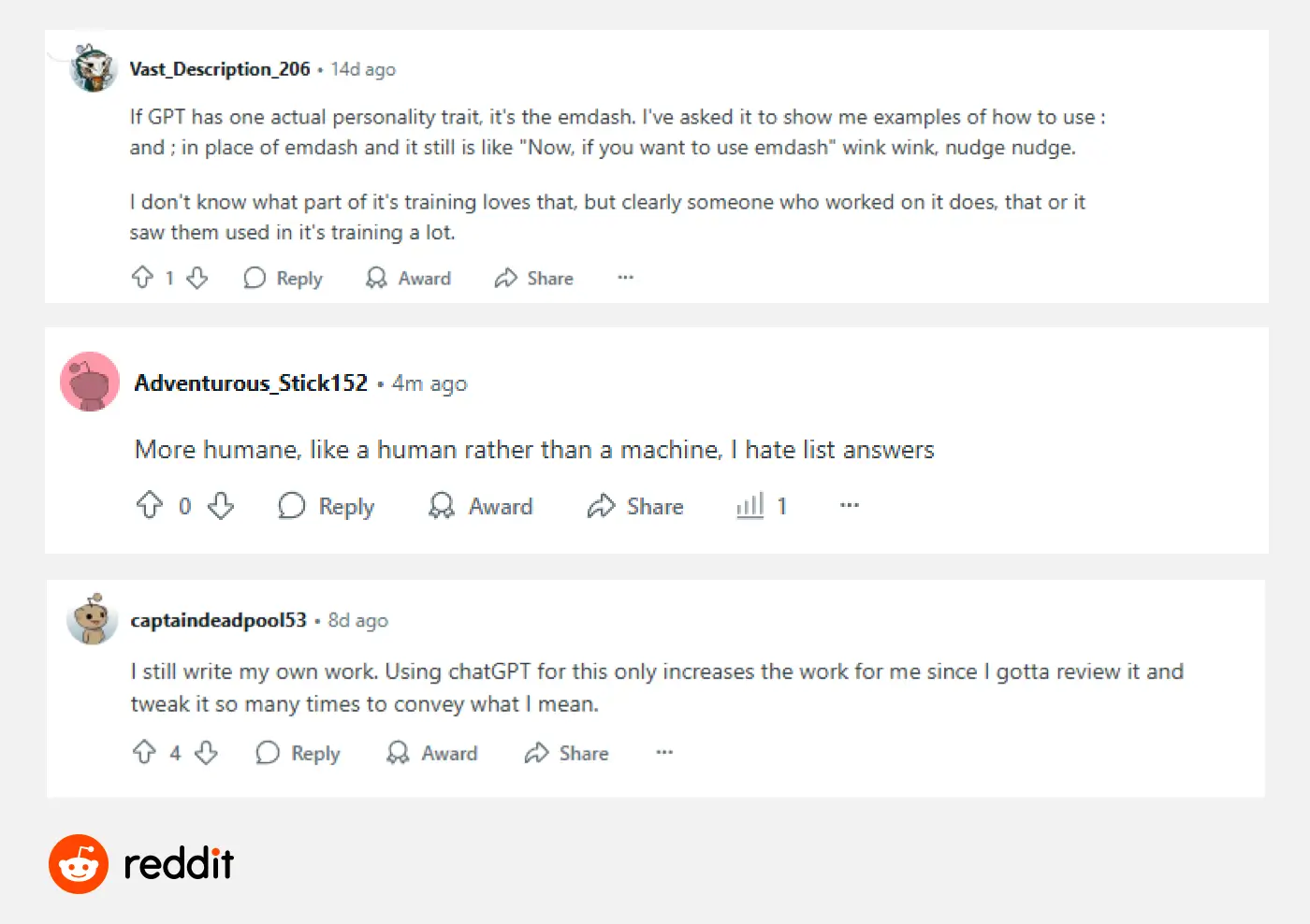
The popularity of dialogue tools like Character AI also reflects this trend: users want interactions that feel emotionally aware and more engaging.
That’s why expectations are high for GPT-5 — not just to improve language richness, but to make real advances in contextual and emotional understanding, and move closer to genuinely human-like interaction.
Conclusion
Regarding GPT-5, we already have some exciting clues and a number of promising upgrade directions to look forward to.
From model integration and extended context windows to more natural expression styles, many of the pain points users care about seem likely to be addressed in GPT-5.
But whether it can truly deliver these improvements still needs time to be confirmed. We will continue to follow the progress of GPT-5’s release and share our hands-on experience as soon as it becomes available.
If you’re not only interested in GPT-5 but also want to explore other leading models like Claude, Gemini, and Perplexity, consider trying GamsGo AI — an affordable, integrated AI service platform that allows you to experience cutting-edge AI technology at a lower cost.
FAQ
Is ChatGPT 5 out?
As of now, GPT‑5 has not been officially released. OpenAI CEO Sam Altman has said that the model is expected to launch in the summer of 2025. Multiple media outlets have predicted a release in August. It is currently still in the final testing stage.
What will ChatGPT 5 do?
ChatGPT 5 is expected to feature an upgrade in model architecture, integrating multiple OpenAI technologies, including o3. Based on current information, it may perform better in understanding complex tasks and handling multiple input types such as images and voice, improving the overall interaction experience.
Can I use ChatGPT 5 for free?
Yes. According to OpenAI CEO Sam Altman’s statement on X, ChatGPT 5 is expected to offer basic access to free users. However, subscription users will have access to versions with higher intelligence levels and a more complete feature experience.

